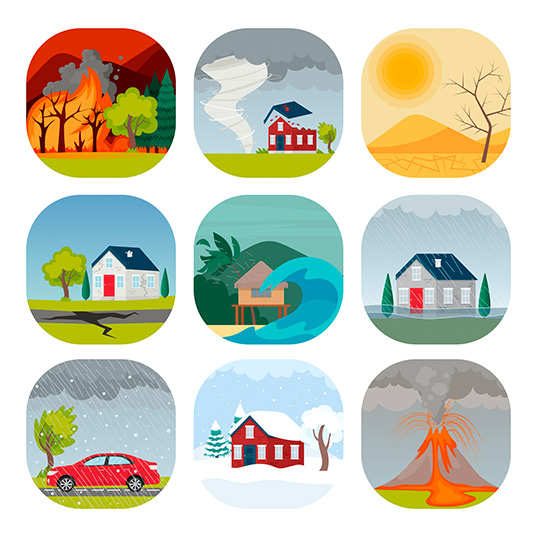In an increasingly hotter world, where extreme weather and natural disasters occur with increasing frequency, a new class of displaced people is emerging: climate refugees. Although images of war and political crises often dominate news stories about refugees, a less visible but equally devastating threat is forcing more and more people from their homes.
What will I read in this article?
The reality of climate refugees
Hbiba Ali and her two children, aged two and three, arrive at the Somalia-Ethiopian border after four days of walking across Somalia. A new home awaits them there: the Kaxareey camp for Internally Displaced Persons (IDP). Climate change has led their country to experience drought after drought.
"We earned a living from livestock, but there was no way to keep them alive. When your animals die, you die with them. That's why we left. The wells we used to draw water from have dried up. We don't have anything here either, but we have nowhere else to go, and we hope to get help", says this displaced woman, reported by El País.
Climate refugees are people like Hbiba Ali and her family who are forced to leave their homes and communities due to drastic changes in their local environment. These changes can include a variety of extreme climate-related events such as floods, droughts, forest fires and violent storms, as well as more gradual changes such as rising sea levels and desertification.
When climate change forces you to migrate
According to data provided by UNHCR, in 2022 more than half of new reported displacements were the result of climate disasters. This means that almost 32 million people had to flee their homes due to climate-related hazards. If we compare these data with those for 2008, a significant increase of 41% in this type of displacements is observed. The World Bank warns that if no action is taken to mitigate climate change, the figure of 140 million climate refugees could be exceeded by 2050.
"In 2022, almost 32 million people had to flee their homes due to climate-related hazards."
The loophole that challenges climate refugees
One of the particular features of these displaced people is that those fleeing climate disasters end up finding refuge elsewhere in their own country. This means that they face a unique set of challenges, as they often fall outside the traditional legal definitions of refugees, so it can be more difficult for them to access the necessary protection and support.
 The 1951 Refugee Convention "offers protection only to those fleeing war, violence, conflict or persecution who have crossed an international border to find safety. Another obstacle is that the concept of "Climate refugee" is not recognised in international law.
The 1951 Refugee Convention "offers protection only to those fleeing war, violence, conflict or persecution who have crossed an international border to find safety. Another obstacle is that the concept of "Climate refugee" is not recognised in international law.
Furthermore, climate change increases the risk of violence. For example, in 2021 hundreds of people were killed in northern Cameroon and tens of thousands fled to neighbouring Chad after violence broke out between herders and fishermen as a result of dwindling water resources due to droughts caused by climate change.
Climate change multiplies existing threats. It magnifies the impact of other factors that can contribute to displacement, such as poverty, loss of livelihood and stress related to diminishing resources, creating situations that can lead to people fleeing a region simply to survive.
In Burkina Faso, UNHCR has reported terrible episodes of violence by armed groups. Since November 2022 more than 60,000 Burkinabe asylum seekers have fled to neighbouring coastal countries such as Ivory Coast, Togo, Ghana and Benin.
Some of the worst situations have occurred in the poorest and most drought-affected areas, where armed groups have taken advantage of tensions over access to dwindling water sources and natural resources.
No one is exempt from becoming a climate refugee as this is a global problem affecting all regions, from the Pacific islands to the coasts of Africa and rural communities in Latin America.
Climate change is exacerbating existing threats and magnifying the factors that contribute to the displacement of people, ranging from drought to violence. However, despite the difficulties in quantifying the exact number of displacements attributable to climate change, it is clear that the number will continue to rise if we do not take action to mitigate its effects.
Source:
Journalist and content manager specialising in sustainability. Trained at the Carlos III University of Madrid, she works at the intersection between the environmental, the human and the organisational from a conscious and committed point of view.
Her texts seek to provide clarity and perspective, integrating a critical, conscious and documented look at the challenges of the present.
Collaborates in
Sustainability for allSpecializing in
Climate change
Sustainability
Environment